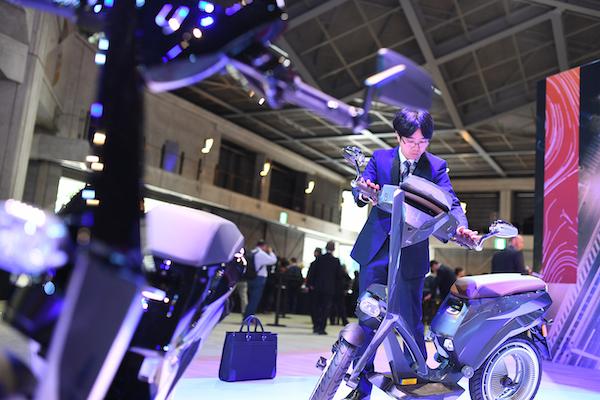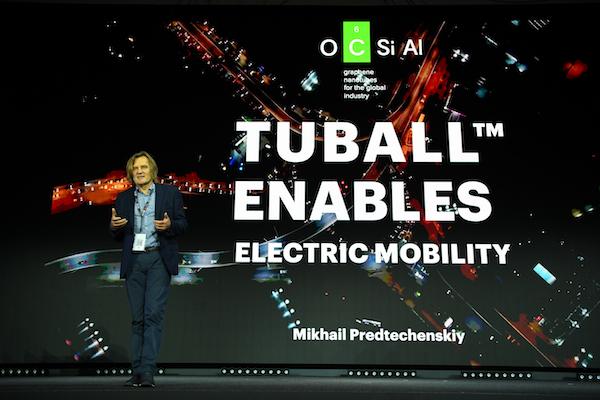
After more than 100 years of domination by cars with internal combustion engines, we are now in the process of changing our seats to electric vehicles (EVs). The auto industry is in great need of lighter functional materials and new energy storage systems. At the 2019 Nanoaugmented Materials Industry Summit (NAUM’19) in Kyoto, 450 experts from 31 country debated how single wall carbon nanotubes meet these challenges and unlock the development of completely new materials and products.
“The entire auto industry is ready for a dramatic change. And single wall carbon nanotubes are an excellent candidate for achieving these ambitious goals,” said Ivica Kolaric , Fraunhofer IPA Head of Department, at the debates on the future of transportation and the role of graphene nanotubes, also known as single wall carbon nanotubes, in this. Rob Thompson , Arrival Chief of Materials, agreed: “We need to switch to electric powertrains, and we acknowledge the importance of tiny single wall carbon nanotubes in this process. They help to create really smart, strong and recyclable materials.”

What are the key obstacles for EV sales growth? “The current high cost of EVs and their low energy efficiency, which is a result of low battery charging rates and limited mileage,” says Mikhail Predtechenskiy , OCSiAl Head of R&D. “Using graphene nanotubes, it is absolutely possible to cut the price of EVs by 30% to meet that of a standard internal combustion engine car. Nanotube use enables improvements in the battery pack and reductions in the car’s body weight and the tires’ rolling resistance.”
60% of the material used in cars today is steel. How can we replace this with polymers that are lighter, cheaper and more flexible in terms of design? Martin Wildemann , LEHVOSS Group Senior Consultant, said, “I believe the body will be the first part of the car to adopt single wall carbon nanotubes, as we see a lot of potential to enhance it and reduce the weight. Engineers have great opportunities in developing completely new materials and making the whole car smarter.” “We’ve made an aluminum reinforced with nanotubes for a premium OEM,” said Ivica Kolaric . Furthermore, with single wall nanotubes, Fraunhofer is able to turn the more than 16 square meters of car surface into an artificial smart skin for connected cars with sensors and that can change color on demand.
Maxim Predtechenskiy , Head of the Digital Department at UJET , has stated that the UJET e-scooter has already made the mobility leap that everyone is dreaming about. “We are proud of the unmatched absence of weight – UJET is the lightest e-scooter in the world – and we are keen to decrease it further with the help of TUBALL nanotubes produced by OCSiAl. Another example is our TUBALL-augmented tires – the world’s best-in-class tires that deliver up to 30% better wet grip while being the lightest on the market.”
Jean-Nicolas Helt , OCSiAl Development and Support Leader, added: “Car weight reduction and powertrain energy efficiency are important, but tire innovation should be a priority, as the tires are responsible for 30% of the overall energy consumption of the vehicle.” He added that, a fter the inventions of radial construction and silica technology , the third big revolution in the tire industry is now possible thanks to graphene nanotubes, which improve all the key properties at the same time, something that was unachievable with any conventional additive. “TUBALL nanotubes optimize the overall performance, improve the abrasion resistance leading to a longer life, bring a strong improvement in wet grip that boosts safety, enable excellent electrical conductivity resulting in equipment protection, and allow a unique improvement in rolling resistance that reduces vehicles’ energy consumption and emissions.”
But the most rapid advances with graphene nanotubes are being achieved in battery systems, where they break the limits of energy density. Nanotubes enable high energy density 300 Wh/kg batteries with silicon anodes and increased cycle life. Dr Jian Lin , Shenzhen BAK Power Battery Vice President, said, “Single wall carbon nanotubes can be widely applied in both cathodes and anodes. We have a lot of experience with using just a very small amount of these nanotubes for significant improvement of the total energy density of silicon anodes.” The first mass-produced EVs with lithium-ion batteries enhanced with TUBALL graphene nanotubes have already been launched on the Chinese market.
